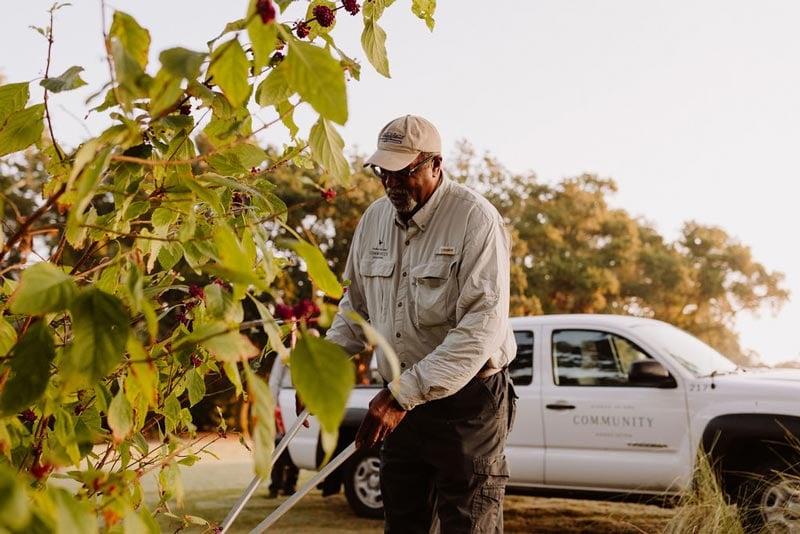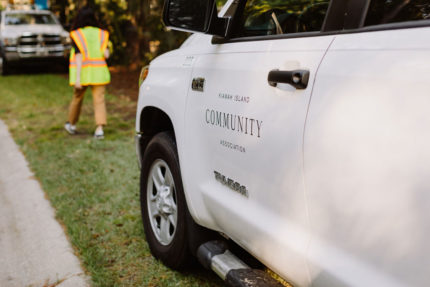Nov
11
2012
From The Blog
West Beach Canopy is a Model for the Island
A Maritime Forest – sounds like the stuff of fairy tales – a place of beauty and tranquility. And it is … Kiawah Island’s high ground is composed mostly of maritime forest and we are its caretakers. It’s important for homeowners, as the island’s stewards, to know a little bit about this ecosystem and what can be done to ensure its healthy future.
Here is a quick overview.
Justin Core of the Kiawah Island Conservancy explains, “There are two key “layers” in the maritime forest and each has a specific role to play:
• Tree Canopy – this is the crown formed by Kiawah’s tallest trees. These trees form a canopy or umbrella over the areas beneath. It is a key component of the island’s ecology and has adapted to the harsh growing conditions faced along the coast: high winds, sandy soil, extremes of heat and cold, and periods of drought as well as heavy precipitation. It serves as habitat for a number of bird
species, most notably woodpeckers – including the red-bellied, downy and pileated woodpeckers. It is also used for nesting by ospreys and bald eagles. And it protects the forest interior (and homes) from wind and salt spray.
• Understory – this is the vegetation that grows closer to the forest floor. Although we often associate Kiawah with live oaks, pines and palmettos, the understory provides the bulk of the vegetation that gives Kiawah its natural look and feel and provides the key habitat for many wildlife species to nest, rest and safely move across the island – including deer, bobcats and an assortment of songbirds, such as the painted bunting.”
Here is our challenge
Left free of development, the forest would go through a natural thinning, with large trees dying or being lost to storms or fires, and smaller trees taking their place over time. With development, the canopy can become too dense, effectively blocking sunlight from reaching the forest floor and limiting the growing success (or even establishment) of the understory. Homeowners can improve the chances of successfully maintaining a healthy understory within the landscape by working to manage the canopy properly and carefully selecting understory plants.
There are several ways to achieve this:
• Selective Thinning – Work with a certified arborist to selectively thin the forest canopy on your property. A listing of arborists licensed to do business on Kiawah (who are certified through KICA’s Landscape Certification Program and aware of KICA’s Landscape Management Guidelines) is available on www.kica.us (Island Living/Landscape Certification Program). Thinning the canopy will allow more sunlight to penetrate through to the forest floor. This will give understory plants a better chance of surviving and becoming more robust.
• Shade Tolerant Plants – Install shade tolerant plant species to boost understory vegetation density. Good examples of shade tolerant species include: ferns (native varieties include Christmas fern, cinnamon fern and bracken fern), coastal leucothoe, yaupon holly and dwarf palmetto.
• Native Plants – Install native plants that are used to living in the Kiawah environment. Historically, they are more drought-tolerant and less susceptible to the various pathogens that affect plants in general. Examples include sabal minor, sweetgrass, spartina grass, southern shield fern, coral bean, wax myrtle and yucca and various tree species like red cedar, magnolia, sabal palm and pine.
A related maintenance tip from Core, “snags, or standing dead trees, provide wonderful habitat for cavity nesting birds. If they don’t present a hazard to property, they should be left standing, as they provide a great habitat niche. And – better to have a woodpecker working on a dead tree than your home!”
West Beach Leads the Way
KICA is taking steps to maintain the canopy in common areas with an initial focus on West Beach. Dave Achey, KICA director of land management, explains, “Because West Beach is an older neighborhood, there is a thicker canopy. Homeowners may notice that landscaping which worked well 10 years ago is dying or thinning out due to lack of light. We have begun the thinning project on Kiawah Beach Drive (from the Parkway to the Straw Market). New plantings for the area include sweet grasses (pictured below) in the lightest area near the road, transitioning to sabal minor, saw palmetto and yaupon holly where less light is coming through. It’s important to remember that you don’t need a lot of light – a dappling of light that reaches the forest floor mimics the optimal forest understory condition.”
Achey concludes with this simple reminder, “work with the forest and you’ll be more successful in your landscaping projects and protect Kiawah Island in the process.”
*The Architectural Review Board (ARB) will work with you on landscaping and landscape maintenance plans; in some cases approval is required (especially those that involve removing trees or pruning in sensitive areas). Contact the ARB at [email protected] or 843-767-3419.

